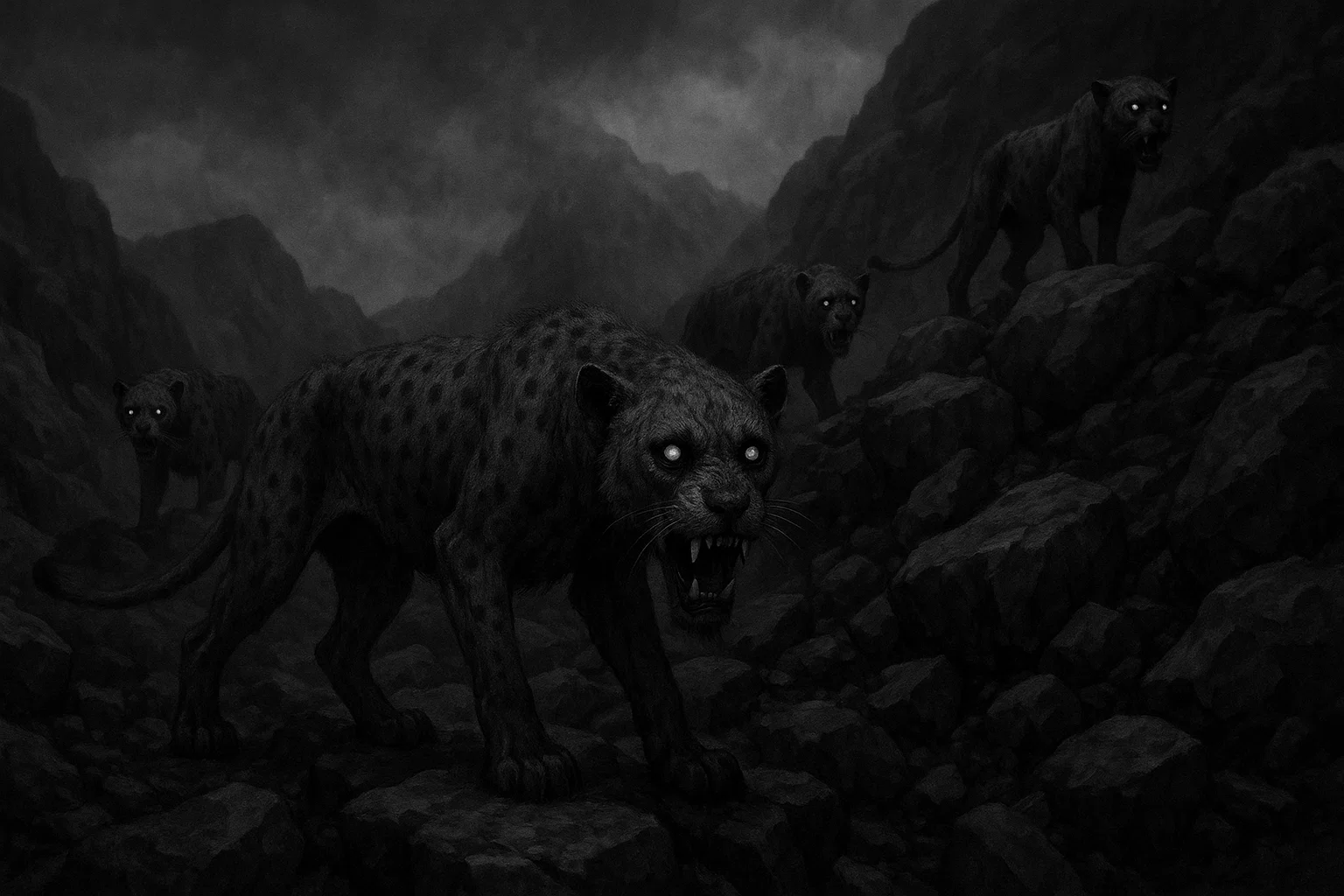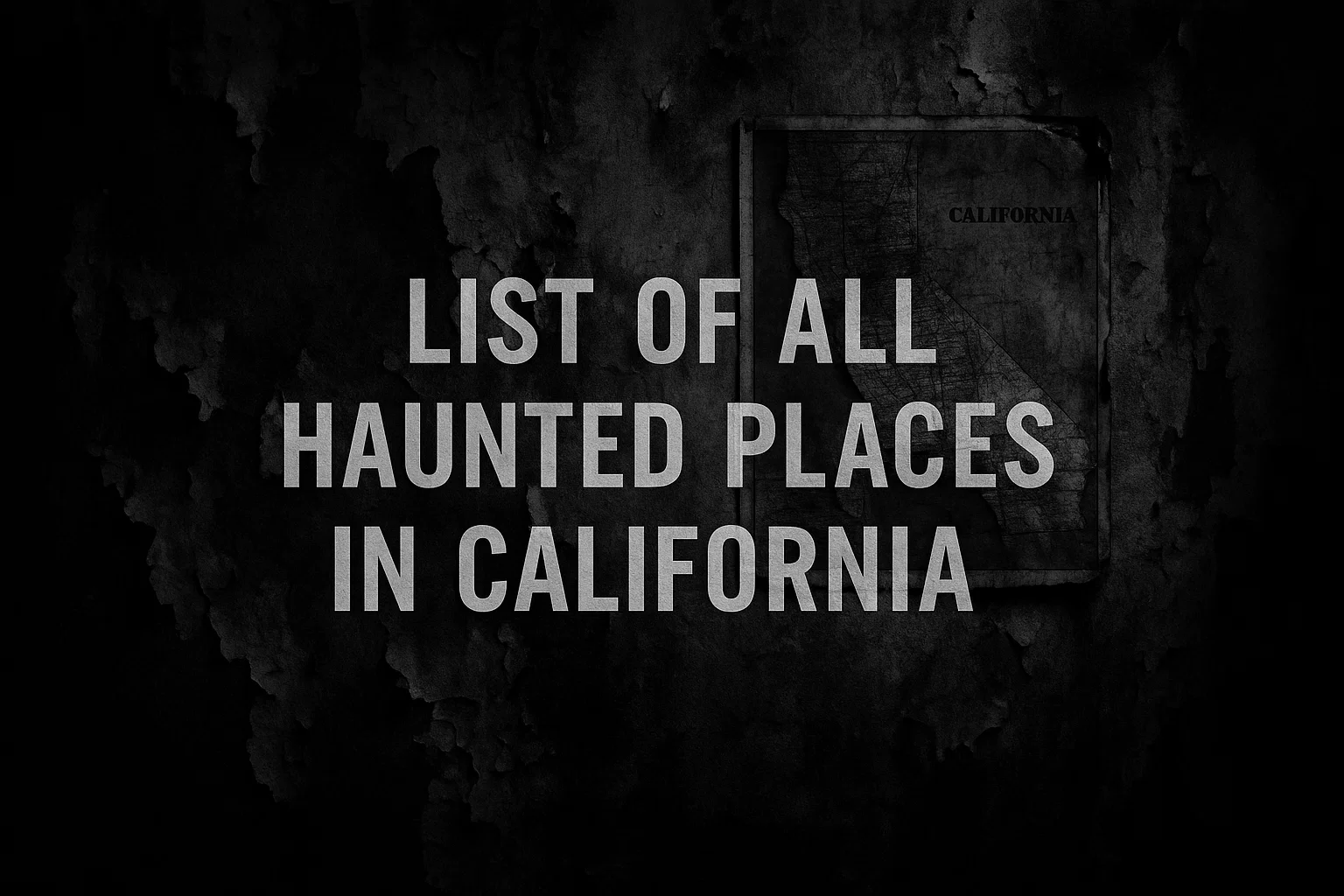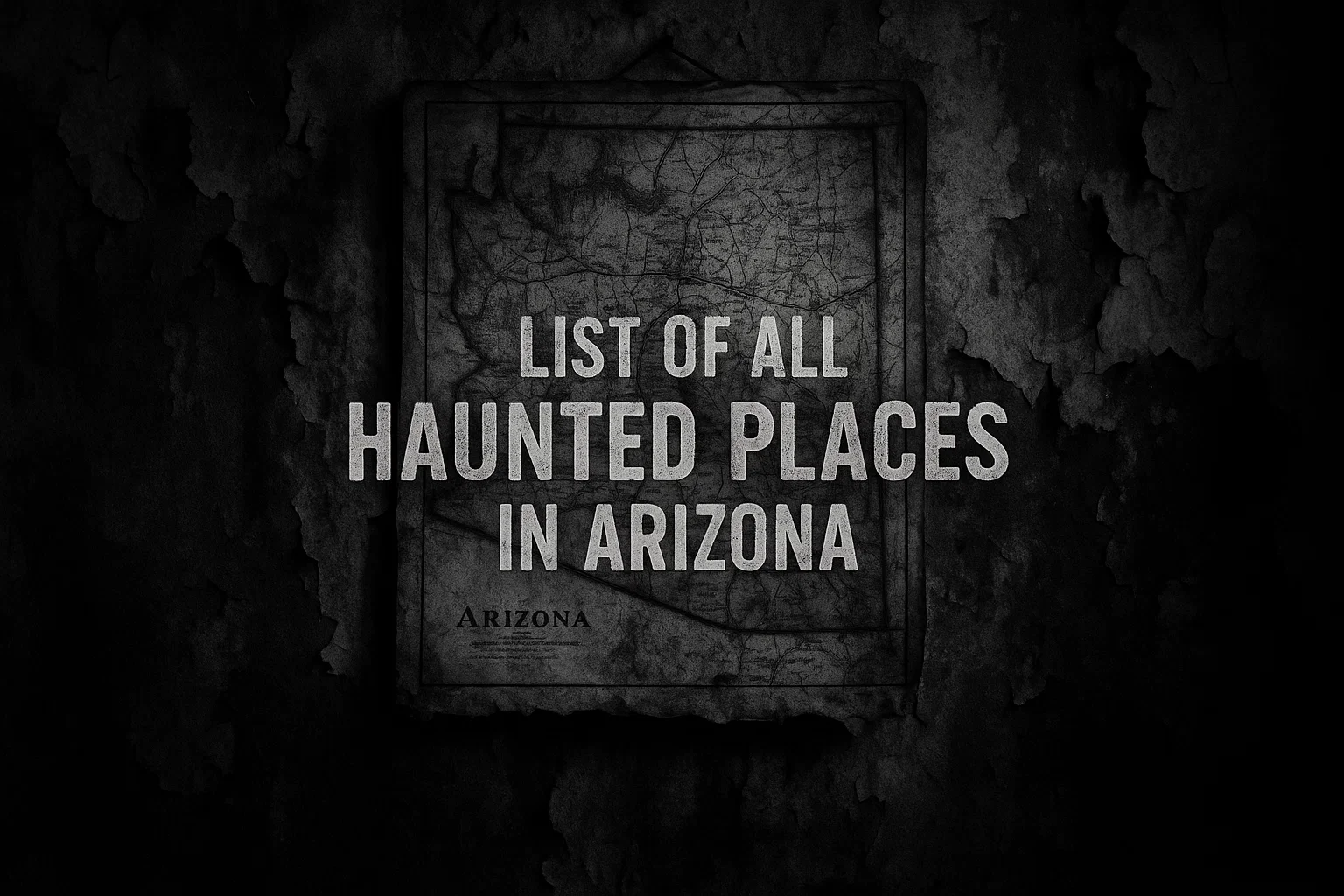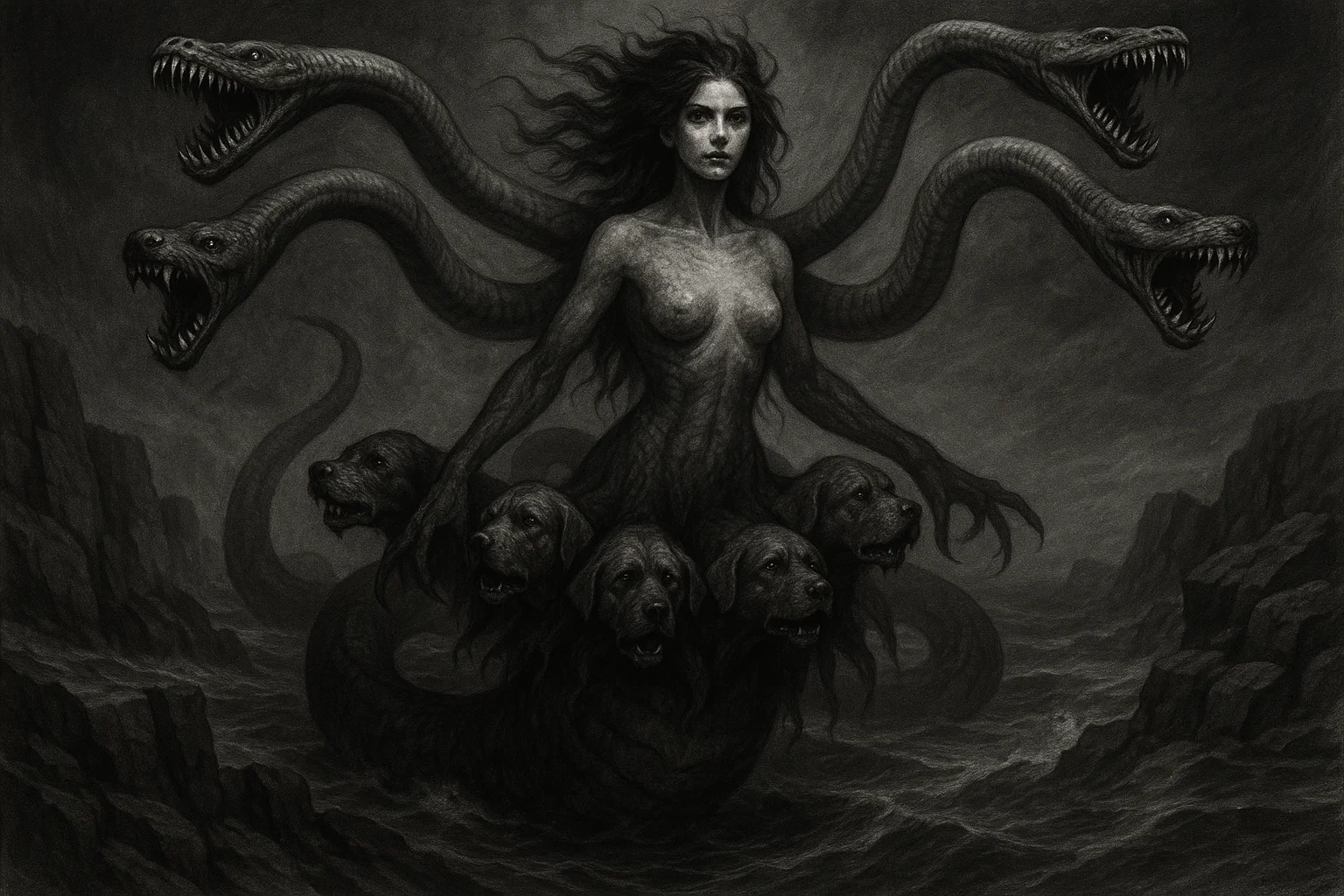In the mist-shrouded highlands of Kenya’s Aberdare Mountains, whispers of a mysterious creature echo through dense forests and rugged terrains: the Marozi, or spotted lion, a cryptid that defies conventional zoology.
This elusive feline, blending the majesty of a lion with the spotted camouflage of a leopard, has captivated cryptozoologists, adventurers, and local communities for over a century. What is this enigmatic beast? Is it a genetic anomaly, a forgotten subspecies, or a myth born from the shadows of East Africa’s montane wilderness?
With its lion-like form, distinctive rosettes, and a history steeped in intrigue, the Marozi remains one of cryptozoology’s most compelling puzzles.
Summary
What Is the Marozi?
The Marozi, known locally as the ntarago or ngarago in the Kikuyu language, is a cryptid reported primarily in the high-altitude forests of Kenya’s Aberdare Mountains, with occasional mentions in neighboring regions like the Kinangop Plateau and Mount Kenya.
Described as a lion (Panthera leo) that retains juvenile spots into adulthood, it is smaller than typical African lions and lacks the prominent mane associated with male lions.
The name Marozi is derived from the Kikuyu term for a solitary or secretive lion, reflecting its elusive nature and preference for dense, forested habitats over the open savannahs where lions typically roam.
The Marozi first gained attention in the early 20th century through Western explorers’ accounts, but its roots lie deep in East African oral traditions. Local Kikuyu and other tribes distinguished the Marozi from both lions and leopards, describing it as a distinct predator with unique markings and behaviors.
For instance, its reported solitary hunting style contrasts with the pride-based social structure of savannah lions, suggesting a specialized adaptation to its montane environment.
Cryptozoologists like Bernard Heuvelmans, in his 1955 work On the Track of Unknown Animals, proposed that the Marozi could be a distinct subspecies, tentatively named Panthera leo maculatus, though no scientific consensus supports this classification.
Historical records, including preserved pelts and skulls, suggest the Marozi was not merely a legend but a tangible creature, at least until the 1930s when sightings ceased.
Its cryptic status stems from the lack of modern genetic analysis and the absence of recent encounters, leaving open questions about whether it was a rare variant, a now-extinct population, or a case of mistaken identity.
The Marozi’s blend of lion-like power and leopard-like stealth continues to fuel speculation about its place in the natural world.
What Does the Marozi Look Like?
The Marozi’s physical appearance is its most distinctive feature, setting it apart from known felines. Based on historical accounts and preserved specimens, the Marozi is a lion-like cat, measuring approximately 5 feet 10 inches (1.78 meters) in body length, with a tail of about 2 feet 9 inches (0.84 meters).
Its coat is tawny, typical of lions, but adorned with irregular brown spots or rosettes on its flanks, shoulders, thighs, and upper legs, while the spine and underbelly remain unspotted. These markings resemble the juvenile spots of lion cubs, which typically fade by adulthood, making the Marozi’s retention of them a striking anomaly.
Male Marozi are reported to have minimal or no mane, with only sparse side-whiskers or a slight ruff, measuring up to 5 inches (12.7 cm), unlike the thick, flowing manes of savannah lions. This reduced mane enhances its camouflage in the dense, shadowy forests of its habitat, where a prominent mane would be a liability.
You May Also Like: Is the Grootslang Real? Snake, Elephant, or Something Else?
Females are similarly spotted, with a sleeker build, and both sexes have a leaner, more agile frame than typical lions, suggesting adaptations for navigating rugged, forested terrain. The eyes are described as amber or golden, typical of big cats, with a robust jaw and sharp canines suited for hunting medium to large prey like buffalo or antelope.
The Marozi’s spotted coat aligns closely with its montane forest environment, where dappled sunlight and dense vegetation favor camouflage over the uniform tawny coat of savannah lions. This adaptation mirrors that of leopards, which rely on their rosettes for stealth in similar habitats.
However, the Marozi’s larger size and lion-like skeletal structure distinguish it from leopards, making its appearance neither fully lion nor leopard but a unique blend.
The preserved skins, such as those from Michael Trent’s 1931 encounter, confirm these characteristics, showing a lion-like pelt with persistent rosettes, though their exact pattern varies slightly between individuals.
This appearance is not out of place in the Aberdare Mountains’ lush, forested ecosystem, where concealment is key for ambush predation. The Marozi’s spotted coat and reduced mane suggest an evolutionary response to its environment, unlike the conspicuous manes of savannah lions, which signal dominance in open landscapes.
This alignment with its habitat strengthens the case for the Marozi as a specialized predator, distinct from its savannah-dwelling cousins.
Habitat
The Marozi is primarily associated with the Aberdare Mountains in central Kenya, a rugged, high-altitude range spanning approximately 1,600 square miles (4,140 square kilometers).
This region, part of the Great Rift Valley, features elevations between 6,600 and 13,100 feet (2,000 to 4,000 meters), with dense montane forests, bamboo thickets, and moorlands.
The Aberdares’ climate is cool and moist, with frequent mists and heavy rainfall supporting lush vegetation, including Hagenia trees, giant heather, and fern undergrowth. This contrasts sharply with the arid savannahs where lions typically thrive, suggesting the Marozi evolved to exploit a unique ecological niche.
Additional reports place the Marozi in adjacent areas, such as the Kinangop Plateau (11,500 feet) and Mount Kenya (17,057 feet), both characterized by similar forested, high-altitude terrain. These regions host diverse fauna, including buffalo, bongo antelope, bushbuck, and smaller mammals, providing ample prey for a large predator.
The limited human presence in these remote areas—mostly small Kikuyu settlements and later colonial outposts—allowed the Marozi to remain elusive, with minimal disturbance until the early 20th century.
Connection to Paranormal Events and Local Legends
The Aberdare Mountains and surrounding regions have a rich history of unexplained phenomena and local folklore, potentially linked to the Marozi.
The Kikuyu people, native to the area, have long spoken of the ntarago, a solitary, spotted feline distinct from lions (simba) and leopards (chui). Oral traditions describe the ntarago as a stealthy hunter with supernatural qualities, sometimes associated with ancestral spirits or omens.
These stories, passed down through generations, suggest the Marozi was a known entity long before Western documentation, reinforcing its cultural significance.
The Aberdares are also linked to other cryptids and unexplained events. Reports of the Nandi Bear, a bear-like or hyena-like creature, have surfaced in nearby regions, though its description differs significantly from the Marozi’s feline form.
You May Also Like: The SS Ourang Medan’s Last Call | Horror Story
Additionally, the area’s dense forests and isolation have fueled tales of strange lights, disembodied vocalizations, and sightings of unidentified creatures, particularly during colonial expeditions in the late 19th and early 20th centuries.
For example, early settlers reported hearing guttural roars unlike those of known predators, aligning with accounts of the Marozi’s distinctive vocalizations.
The region’s history of unexplained phenomena is tied to its challenging terrain and limited accessibility, which hindered systematic exploration until the 20th century.
During the Mau Mau Uprising (1952–1960), the Aberdares served as a rebel stronghold, with fighters reporting encounters with unusual wildlife, though none were conclusively linked to the Marozi. The area’s mystique, amplified by its inaccessibility and cultural significance, makes it a hotspot for cryptozoological speculation, with the Marozi as its most prominent enigma.
Marozi Sightings
The Marozi’s legend is built on a series of documented sightings, primarily from the early 20th century, which provide the most compelling evidence for its existence.
| Date | Location | Witness | Description |
|---|---|---|---|
| 1903 | Kenyan Highlands (likely Aberdares) | Colonel Richard Meinertzhagen | Saw dark, lion-like animals with rosettes, moving through forest. |
| 1924 | Kinangop Plateau, Kenya | Raymond Hook | Observed a lone, spotted feline stalking bushbuck at 11,000 ft; lost in undergrowth. |
| 1931 | Aberdare Mountains, Kenya | Michael Trent | Shot two Marozi (male and female) near Magura River at 10,000 ft; skins preserved. |
| 1933 | Aberdare Mountains, Kenya | Kenneth Gandar Dower | Found three sets of tracks near Gura River at 12,500 ft, linked to buffalo kill. |
| 1934 | Aberdare Mountains, Kenya | Captain R. E. Dent | Saw four spotted, lion-like animals near Nyeri Track at 10,000 ft. |
| 1935 | Kinangop Plateau, Kenya | G. Hamilton-Snowball | Sighted two spotted Marozi stalking antelope at 11,500 ft; escaped after shot fired. |
| Undated | Kichwamba, Kenya | E. A. Temple-Perkins | Heard guttural vocalization of ntarago, confirmed by four Kikuyu trackers. |
1903: Colonel Richard Meinertzhagen’s Observation
In 1903, British Colonel Richard Meinertzhagen, a military officer and ornithologist stationed in Kenya, reported seeing a group of dark, lion-like animals with rosette-like markings in the Kenyan highlands, likely the Aberdare Mountains.
Stationed at a colonial outpost, Meinertzhagen noted the animals’ unusual appearance during a reconnaissance mission. He described them as smaller than typical lions, with a tawny coat and distinct spots, moving stealthily through dense forest.
His account, recorded in his personal journals, marked the first Western documentation of the Marozi, sparking interest among naturalists. However, the lack of physical evidence or precise location details limited its impact.
1924: Raymond Hook’s Encounter
In 1924, big-game hunter Raymond Hook, based near the Kinangop Plateau, reported a close encounter with a Marozi at approximately 11,000 feet.
Hook, an experienced tracker, observed a lone, spotted feline stalking a bushbuck in a forested ravine. He described it as lion-like but smaller, with a short mane and prominent rosettes on its flanks. Hook attempted to pursue the animal but lost it in the thick undergrowth.
His account, shared with local colonial authorities, reinforced the Marozi’s presence in high-altitude forests and aligned with Kikuyu descriptions of the ntarago.
You May Also Like: Anne Boleyn’s Ghost: England’s Tragic Queen Who Haunts Forever
1931: Michael Trent’s Kill
The most significant Marozi evidence came in 1931, when Kenyan farmer Michael Trent shot and killed two Marozi—a male and a female—in the Aberdare Mountains at 10,000 feet (3,000 meters).
On a hunting expedition near the Magura River, Trent spotted the pair resting on a rocky outcrop. Both animals, estimated to be two to three years old, had tawny coats with brown rosettes and minimal manes on the male.
The Nairobi Game Department examined the carcasses, confirming their lion-like features but noting the unusual spotting. Trent retained one skin and skull, while the other was sent to London’s Natural History Museum, providing tangible evidence of the Marozi’s existence.
1933: Kenneth Gandar Dower’s Expedition
In 1933, explorer Kenneth Gandar Dower, inspired by earlier reports, led an expedition to the Aberdare Mountains and Mount Kenya to capture a Marozi.
On November 15, 1933, near the Gura River at 12,500 feet, Dower’s team discovered three sets of tracks, larger than a leopard’s but smaller than a lion’s, accompanied by signs of a recent buffalo kill.
Dower, accompanied by Kikuyu guides, noted that locals identified the tracks as belonging to the ntarago. Despite extensive searching, no live Marozi was sighted, but the tracks provided circumstantial evidence of its presence.
1934: Captain R. E. Dent’s Sighting
In 1934, Captain R. E. Dent, a game warden in the Aberdare National Park, reported seeing four Marozi at 10,000 feet near the Nyeri Track. On patrol with native rangers, Dent observed the animals crossing a forest clearing at dusk.
He described them as lion-like, with spotted coats and no prominent manes, moving in a small group. Dent’s attempt to photograph the animals failed due to low light, but his detailed report to the Nairobi Game Department corroborated earlier sightings, emphasizing the Marozi’s distinct appearance.
1935: G. Hamilton-Snowball’s Encounter
In 1935, colonial administrator G. Hamilton-Snowball sighted a pair of Marozi on the Kinangop Plateau at 11,500 feet. While inspecting a coffee plantation, he spotted two spotted, lion-like animals stalking a herd of antelope. Snowball fired a rifle to scare them off, but the animals fled into dense bamboo thickets.
His account, shared with local authorities, described the creatures as having rosettes and a leaner build than typical lions, aligning with other reports from the region.
You May Also Like: Beleth the Demon King: Terrifying Ruler of Love, War, and 85 Legions
Evidence, Investigations, and Theories
The Marozi’s case rests on a combination of physical evidence, historical investigations, and competing theories, each offering insights into its potential reality.
Physical Evidence
Skins and Skulls: The 1931 specimens killed by Michael Trent provide the most robust evidence. The male and female Marozi, shot near the Magura River, had tawny coats with rosettes, confirmed by the Nairobi Game Department.
One skin and skull were retained by Trent, while the other was sent to London’s Natural History Museum, where they remain unanalyzed by modern methods. These pelts, measuring approximately 5 feet 10 inches in body length, display lion-like features with persistent spotting.
Tracks: Kenneth Gandar Dower’s 1933 expedition documented three sets of tracks near the Gura River, measuring larger than a leopard’s but smaller than a lion’s. Accompanied by signs of a buffalo kill, these tracks suggested a distinct predator, corroborated by Kikuyu guides’ identification as ntarago.
Photographs: Historical images of the Trent skins, taken by the Nairobi Game Department, show a lion-like pelt with rosettes, reinforcing eyewitness descriptions. No live photographs or videos exist, limiting visual evidence to preserved specimens.
Investigations
Nairobi Game Department (1931): The examination of Trent’s specimens confirmed their lion-like anatomy but noted the unusual spotting and lack of mane. The department’s report, filed in Nairobi, sparked brief scientific interest, but limited resources prevented further study.
Kenneth Gandar Dower’s Expedition (1933): Dower’s well-funded expedition, launched on November 1, 1933, aimed to capture a live Marozi. His team, including Kikuyu trackers, surveyed the Aberdares and Mount Kenya, finding tracks and interviewing locals who distinguished the ntarago from other felines. Dower’s 1937 book, The Spotted Lion, detailed these findings but lacked conclusive proof.
Scientific Analysis: In 1963, zoologist Charles Albert Walter Guggisberg suggested the Marozi was a color morph of lions, possibly related to aberrant Somali lions (Panthera leo somalica). W. Robert Foran (1950) and Noel Simon (1962) supported this view, citing rare instances of spot retention in adult lions. However, no modern genetic studies have been conducted, leaving these conclusions speculative.
Theories
Several theories attempt to explain the Marozi’s nature, each with strengths and weaknesses:
Color Morph of Lions
This theory posits that the Marozi is a genetic variant of Panthera leo, where a mutation causes retention of juvenile spots. It fits the physical evidence, as some adult lions retain faint rosettes, and aligns with the Nairobi Game Department’s findings. However, the Marozi’s smaller size and montane habitat suggest additional adaptations, and the lack of genetic data weakens this hypothesis.
Likelihood: High, due to alignment with known lion biology, but unconfirmed without DNA analysis.
Distinct Subspecies
Bernard Heuvelmans’ 1955 proposal of Panthera leo maculatus suggests a specialized lion subspecies adapted to montane forests. The Marozi’s spotted coat, reduced mane, and solitary behavior support this, as does its distinct habitat. However, the absence of a breeding population or recent sightings suggests extinction, and no fossil record supports a separate lineage.
Likelihood: Moderate, compelling but undermined by lack of ongoing evidence.
Lion-Leopard Hybrid
Early speculation proposed the Marozi as a natural hybrid between a lion and a leopard. This is unlikely, as lions and leopards are natural rivals, and hybrids are rare in the wild, requiring artificial conditions (e.g., captivity). The lion-like skeletal structure of the Trent specimens further discredits this theory.
Likelihood: Low, due to biological improbability and lack of supporting evidence.
You May Also Like: Was It Real? The Choccolocco Monster and Alabama’s Wildest Urban Legend
Misidentification
Skeptics suggest the Marozi could be misidentified leopards, juvenile lions, or hybrids of domestic cats and wildcats. However, the preserved skins and tracks, which are distinctly lion-like yet spotted, contradict this. Kikuyu distinctions between ntarago, simba, and chui further undermine this theory.
Likelihood: Low, as physical evidence and local knowledge support a unique entity.
The color morph theory is the most likely, given its alignment with known lion biology and the physical evidence. However, the Marozi’s specialized habitat and behavior suggest it may have been a localized population with unique adaptations, possibly warranting subspecies status if genetic analysis confirms divergence.
Comparison With Other Similar Cryptids
The Marozi shares traits with other big cat cryptids and known species, particularly those with spotted or striped coats or montane habitats:
| Cryptid/Animal | Location | Description | Habitat |
|---|---|---|---|
| Gippsland Phantom Cat | Australia (Gippsland) | Large spotted cat, possibly puma | Bushland |
| Mngwa | Tanzania | Grey cat with brindled stripes | Coastal forests |
| Florida Panther | USA (Florida) | Cougar subspecies with faint spots | Swamps, forests |
| Wampus Cat | USA (Appalachians) | Large cat, sometimes spotted | Forests |
| Beast of Gévaudan | France | Wolf-like or hybrid predator | Rural areas |
| Alien Big Cats | UK, USA, etc. | Non-native large cats, often spotted | Varies |
| Nandi Bear | Kenya | Bear-like or hyena-like creature | Highlands, forests |
| Dingonek | Lake Victoria, Africa | Cat-like with thick body, spots | Rivers, swamps |
| Kellas Cat | Scotland | Domestic cat-wildcat hybrid | Highlands |
| Coon-Cat | Georgia, USA | Cat-raccoon hybrid, spotted face | Forests |
| Wobo | Ethiopia | Yellowish cat with black stripes | Rocky mountains |
| Ikimizi | Rwanda | Large spotted cat, lion-like | Forests |
| Nunda | Tanzania | Large cat with striped coat | Forests |
The Marozi’s lion-like size and spotted coat distinguish it from smaller cryptids like the Kellas Cat or Coon-Cat, while its montane habitat aligns with the Ikimizi and Wobo, though these lack the Marozi’s documented evidence.
Is the Marozi Real?
The Marozi’s reality remains one of cryptozoology’s most tantalizing questions. The physical evidence—pelts, skulls, and tracks—suggests a real animal existed in the Aberdare Mountains until at least the 1930s.
Michael Trent’s 1931 specimens, examined by the Nairobi Game Department, and Kenneth Gandar Dower’s 1933 tracks provide concrete support, as do consistent Kikuyu accounts of the ntarago. These factors distinguish the Marozi from purely mythical cryptids, grounding it in tangible evidence.
However, several challenges prevent definitive confirmation:
- Lack of Genetic Analysis: The preserved skins and skulls, held in private collections and the Natural History Museum, have not undergone DNA testing, leaving their taxonomic status unclear.
- Cessation of Sightings: No confirmed reports have emerged since 1935, suggesting the Marozi may have been a small, vulnerable population that succumbed to habitat loss, hunting, or disease.
- Scientific Skepticism: Mainstream zoology favors the color morph theory, citing rare instances of spot retention in lions. Without genetic divergence, the Marozi may not qualify as a distinct subspecies.
The Marozi’s case is stronger than that of many cryptids due to its physical evidence and cultural recognition, but weaker than confirmed species like the Florida Panther.
The color morph theory is the most plausible, given its alignment with lion biology, but the Marozi’s specialized habitat and behavior suggest possible adaptations warranting further study. If extinct, it may have been a localized population of lions with unique genetic traits, perhaps driven to extinction by colonial hunting or environmental changes.
Ultimately, the Marozi embodies the allure of the unknown, a reminder that even in the modern era, nature may hold secrets yet to be uncovered. Until genetic analysis or new evidence emerges, the spotted lion remains a captivating mystery, bridging the gap between folklore and science.







